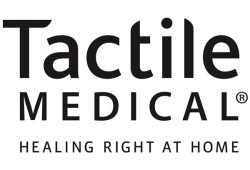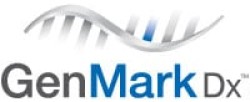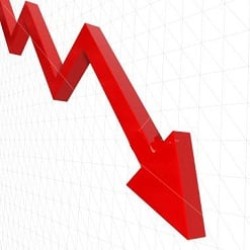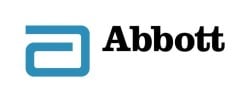Blue Origin is a privately funded aerospace manufacturer and spaceflight service company based in Kent, Washington, and is the brainchild of Amazon (AMZN ) CEO Jeff Bezos. Founded in 2000, the company aims to take private consumers to space.
Blue Origin made headlines earlier this week when it performed a successful high-altitude emergency abort test. The company launched its “New Shepard” rocket and capsule to a record-high altitude, and then simulated a catastrophic failure in the escape pod’s motor. The motor is located at the bottom of the crew capsule and is meant to quickly lift it away from the rocket in the event of an emergency. Even after igniting the engine at record altitudes, both the capsule and rocket were able to land and be recovered safely.
Out of this World
Bezos, who was named Time magazine’s “Person of the Year” in 1999, turned his attention to space the following year when he quietly founded Blue Origin.
Blue Origin came under fire in 2011 when it reported a failure in its suborbital rocket, which went out of control and had to be destroyed. Still, Bezos and his team continued to work hard, and each of the nearly dozen tests that have taken place since then have been successful.
Until Blue Origin relaunched New Shepard, no space rocket had ever been used twice. It marked what could historically be remembered as a key turning point in space exploration. For Bezos, it was the ultimate sign that his dream of lowering the cost of access to space is on the right track. Today, it remains an expensive endeavor, which Bezos reportedly funds by annually liquidating $1 billion in Amazon assets.
A growing amount of people believe in Bezos’ dream as well. NASA first gave the company $3.9 million in funding in 2009 and then $22 million in 2011. Since then, NASA has continued to provide it with support. The company is also currently in the running to receive military funding from the U.S. Air Force for support of new orbital-class rockets. Its proposal puts it up against Orbital ATK, United Launch Alliance, and Tesla (TSLA ) founder Elon Musk’s SpaceX. The contract is expected to be announced in late 2019.
A 21st Century Space Race?
Space exploration was initially a government-only venture. But the turn of the 21st century has given rise to multiple public and privately-owned firms which seek to bring regular citizens to the great beyond.
On the public side, large firms such as Boeing (BA ) and Lockheed Martin (LMT ) already have exposure to space-related ventures and are investing to expand their offerings. Boeing collaborated to help create the International Space Station, which saw its first component launched into orbit 20 years ago — ISS is expected to operate for another decade. These firms also invest in GPS technology, satellites, and other space-related technology. Meanwhile, European power Airbus (EADSY ) is developing the Gaia scope, a billion-pixel camera that the company hopes will allow it to create a detailed 3-D map of the Milky Way.
Other players in the burgeoning industry include Virgin Galactic, Rocket Lab, Made in Space, and Orbex. In Britain, Orbex raised $40 million in funding and plans to develop a launch vehicle using a government-backed spaceport that will be built in Northern Scotland with the help of Lockheed Martin. Virgin also plans to launch from the UK, and like Blue Origin, hopes to take customers into space.
It would be incorrect to assume that space-related activity is only taking place in America and Europe. Ten private rocket companies have formed in just the last three years, according to the China Global Television Network. Russia’s space program has fallen on hard times due to budget restrictions, meaning that it will not be as active as it was during the first space race. Regardless, the 21st century iteration of the race appears to have already begun.
Looking Forward
“The first trillionaire there will be is the person who exploits the natural resources on asteroids,” astrophysicist Neil DeGrasse Tyson said three years ago on NBC. He went on to say that “there’s this vast universe of limitless energy and limitless resources.”
There is no timeline yet for any of these seemingly sci-fi endeavors. But in the meantime, investors can take a look at the companies currently helping advance the field.
Will You Make a Fortune on the Shift to Electric Cars?
Here's another stock idea to consider. Much like petroleum 150 years ago, lithium power may soon shake the world, creating millionaires and reshaping geo-politics. Soon electric vehicles (EVs) may be cheaper than gas guzzlers. Some are already reaching 265 miles on a single charge.
With battery prices plummeting and charging stations set to multiply, one company stands out as the #1 stock to buy according to Zacks research.
It's not the one you think.
See This Ticker Free >>
 Tactile Systems Technology, Inc., a medical technology company, develops and provides medical devices for the treatment of chronic diseases in the United States. The company offers proprietary Flexitouch system, an at-home solution for lymphedema patients; and ACTitouch system, a home-based solution for chronic venous insufficiency patients. It also provides Entr茅 System, a basic pneumatic compression device that is used for the at-home treatment of venous disorders, such as lymphedema and chronic venous insufficiency, including venous leg ulcers. The company was founded in 1995 and is headquartered in Minneapolis, Minnesota.
Tactile Systems Technology, Inc., a medical technology company, develops and provides medical devices for the treatment of chronic diseases in the United States. The company offers proprietary Flexitouch system, an at-home solution for lymphedema patients; and ACTitouch system, a home-based solution for chronic venous insufficiency patients. It also provides Entr茅 System, a basic pneumatic compression device that is used for the at-home treatment of venous disorders, such as lymphedema and chronic venous insufficiency, including venous leg ulcers. The company was founded in 1995 and is headquartered in Minneapolis, Minnesota. GenMark Diagnostics, Inc., a molecular diagnostics company, develops and commercializes molecular tests based on its proprietary eSensor electrochemical detection technology. It provides ePlex instrument and respiratory pathogen panel, which integrates automated nucleic acid extraction and amplification with its eSensor detection technology to enable operators using ePlex system to place patient sample directly into its test cartridge and obtain results. The company offers XT-8 instrument, and related diagnostic and research tests, as well as certain custom manufactured reagents that enable reference laboratories and hospitals to support a range of molecular tests with a workstation and disposable test cartridges. It also provides diagnostic tests for use with its XT-8 system that includes respiratory viral panel, cystic fibrosis genotyping test, thrombophilia risk test, a warfarin sensitivity test, and hepatitis C virus genotyping test and associated custom manufactured reagents, as well as 2C19 genotyping test. The company sells its products through direct sales and technically specialized service organization in the United States and Europe. GenMark Diagnostics, Inc. is headquartered in Carlsbad, California.
GenMark Diagnostics, Inc., a molecular diagnostics company, develops and commercializes molecular tests based on its proprietary eSensor electrochemical detection technology. It provides ePlex instrument and respiratory pathogen panel, which integrates automated nucleic acid extraction and amplification with its eSensor detection technology to enable operators using ePlex system to place patient sample directly into its test cartridge and obtain results. The company offers XT-8 instrument, and related diagnostic and research tests, as well as certain custom manufactured reagents that enable reference laboratories and hospitals to support a range of molecular tests with a workstation and disposable test cartridges. It also provides diagnostic tests for use with its XT-8 system that includes respiratory viral panel, cystic fibrosis genotyping test, thrombophilia risk test, a warfarin sensitivity test, and hepatitis C virus genotyping test and associated custom manufactured reagents, as well as 2C19 genotyping test. The company sells its products through direct sales and technically specialized service organization in the United States and Europe. GenMark Diagnostics, Inc. is headquartered in Carlsbad, California. 24/7 Wall St.
24/7 Wall St. ValuEngine downgraded shares of Vina Concha y Toro (NYSE:VCO) from a buy rating to a hold rating in a research report released on Wednesday.
ValuEngine downgraded shares of Vina Concha y Toro (NYSE:VCO) from a buy rating to a hold rating in a research report released on Wednesday. Moelis & Company, an investment bank, provides strategic and financial advisory services in the United States and internationally. It advises clients in the areas of mergers and acquisitions, recapitalizations and restructurings, capital markets advisory, and other corporate finance matters. The company offers its services to public multinational corporations, governments, financial sponsors, middle market private companies, and individual entrepreneurs. It has strategic alliances with Sumitomo Mitsui Banking Corporation and SMBC Nikko Securities Inc.; and Alfaro, D谩vila y R铆os, S.C. Moelis & Company was founded in 2007 and is headquartered in New York, New York.
Moelis & Company, an investment bank, provides strategic and financial advisory services in the United States and internationally. It advises clients in the areas of mergers and acquisitions, recapitalizations and restructurings, capital markets advisory, and other corporate finance matters. The company offers its services to public multinational corporations, governments, financial sponsors, middle market private companies, and individual entrepreneurs. It has strategic alliances with Sumitomo Mitsui Banking Corporation and SMBC Nikko Securities Inc.; and Alfaro, D谩vila y R铆os, S.C. Moelis & Company was founded in 2007 and is headquartered in New York, New York. Monroe Capital Corporation is a closed-end, non-diversified management investment company. The Company is a specialty finance company focused on providing financing primarily to lower middle-market companies in the United States and Canada. The Company’s investment objective is to maximize the total return to its stockholders in the form of current income and capital appreciation primarily through investments in senior, unitranche and junior secured debt, and unsecured subordinated debt and equity. The Company provides customized financing solutions focused primarily on senior secured, junior secured and unitranche (a combination of senior secured and junior secured debt in the same facility) debt, and subordinated debt and equity, including equity co-investments in preferred and common stock and warrants. The Company’s investment activities are managed by its investment advisor, Monroe Capital BDC Advisors, LLC (MC Advisors).
Monroe Capital Corporation is a closed-end, non-diversified management investment company. The Company is a specialty finance company focused on providing financing primarily to lower middle-market companies in the United States and Canada. The Company’s investment objective is to maximize the total return to its stockholders in the form of current income and capital appreciation primarily through investments in senior, unitranche and junior secured debt, and unsecured subordinated debt and equity. The Company provides customized financing solutions focused primarily on senior secured, junior secured and unitranche (a combination of senior secured and junior secured debt in the same facility) debt, and subordinated debt and equity, including equity co-investments in preferred and common stock and warrants. The Company’s investment activities are managed by its investment advisor, Monroe Capital BDC Advisors, LLC (MC Advisors).

 Equities analysts forecast that Abbott Laboratories (NYSE:ABT) will report sales of $7.76 billion for the current fiscal quarter, according to Zacks Investment Research. Eight analysts have provided estimates for Abbott Laboratories’ earnings, with the lowest sales estimate coming in at $7.73 billion and the highest estimate coming in at $7.77 billion. Abbott Laboratories posted sales of $6.64 billion in the same quarter last year, which suggests a positive year-over-year growth rate of 16.9%. The firm is scheduled to issue its next earnings results on Thursday, July 19th.
Equities analysts forecast that Abbott Laboratories (NYSE:ABT) will report sales of $7.76 billion for the current fiscal quarter, according to Zacks Investment Research. Eight analysts have provided estimates for Abbott Laboratories’ earnings, with the lowest sales estimate coming in at $7.73 billion and the highest estimate coming in at $7.77 billion. Abbott Laboratories posted sales of $6.64 billion in the same quarter last year, which suggests a positive year-over-year growth rate of 16.9%. The firm is scheduled to issue its next earnings results on Thursday, July 19th. Monetta Financial Services Inc. bought a new stake in shares of Electronic Arts (NASDAQ:EA) during the 1st quarter, according to the company in its most recent disclosure with the Securities & Exchange Commission. The fund bought 19,000 shares of the game software company’s stock, valued at approximately $2,304,000. Electronic Arts comprises about 1.2% of Monetta Financial Services Inc.’s holdings, making the stock its 28th largest position.
Monetta Financial Services Inc. bought a new stake in shares of Electronic Arts (NASDAQ:EA) during the 1st quarter, according to the company in its most recent disclosure with the Securities & Exchange Commission. The fund bought 19,000 shares of the game software company’s stock, valued at approximately $2,304,000. Electronic Arts comprises about 1.2% of Monetta Financial Services Inc.’s holdings, making the stock its 28th largest position.